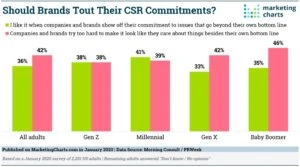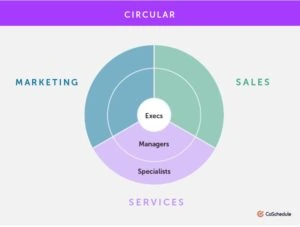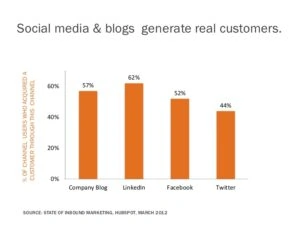Introduction
It is often said that consumers do not buy goods and services. They buy relations, stories, and magic. In simpler terms, they buy the story that is told to them. The marketing department in any company is the powerhouse of this magic. It is what drives sales, acquires customers and retains them creating strong bonds so deep-rooted that these customers become brand loyalists and propagators.
Historically as well, marketing has always existed in a disguised form. While there weren’t defined roles and departments, the simple idea that products only sell if people know that they exist has always been the guiding principle. It is said that the sales era began in the 1920s, and the marketing era began in the 1950s. It is no longer just a supportive function of sales but is looked at with a lot of hope and respect, simply because this department is responsible for ensuring that new people come into the firm, and older ones remain with the brand. Let us take a look at the important functions and responsibilities of the marketing department in a firm.
Importance of the Marketing Department
Over time, as competition for each product and service kept increasing, so has the importance of the marketing department. Traditional lead generation has evolved into relationship building, acquisition and retention by unconventional methods. Here is a rundown of the functions performed by the marketing department that’s more than important for a firm:
1. Building brands: Today’s consumer isn’t looking for a transactional relationship with a brand anymore. They are looking for value addition in the way they interact, consume, and propagate the product or service. Most marketing departments have a sub-function called brand marketing whose sole exercise is to look into building the brand. This could be the tone of voice, defining the demographics of the audience, and so on.
2. Building a customer base: This doesn’t mean that you only look at selling the product or service to customers. If it requires a brand to go the extra mile for the customer, then so be it. Relationship building has gone beyond customer support and relationship managers – today, it is the responsibility of every employee within the firm. Everyone is made to feel like they represent the brand, and when a potential customer approaches them, it is their responsibility to make sure that the customer receives the best experience possible.
3. Building a community of users: Now that you have created the brand and acquired your user-base, it is crucial that this user-base feels a sense of belonging. In other words, this is known as customer retention. Only when your users feel like they are among like-minded individuals, will they want to continue to be a consumer of the product or service.
Organization of the Marketing Department Structure
Now that you have defined the purpose of a marketing department, it is important to define roles and responsibilities. This not only gives a clear idea of the part each individual plays in the company but also provides a heightened sense of responsibility that every employee must feel.
While every company operates differently, sometimes a few titles are clubbed or eliminated, the general structure followed is usually the same:
Chief Marketing Officer/ Head of Marketing: The CMO is as essential to marketing as a CEO is to the entire firm. This person not only brings structure for the whole department but also plays a pivotal role in making sure that all the members of the team are working towards the mission of the firm. This role involves strategizing, studying and implementing trends and predicting potential trends so that the firm is ready for the market in advance.
Director of Marketing: The chief confidante of the CMO, the Director not only helps the CMO make decisions but also takes away all operational burden from his shoulders. The Director ensures that everything finalized inside board meetings is communicated down the order in the marketing department structure.
Vice President Marketing: This is the role where marketing leadership begins. VP marketing plays a vital role in bridging between middle management and upper management. This role primarily requires the VP to ensure that there is direct, smooth and continuous conversation up and down the ladder.
Marketing Manager / Brand Manager: This is the role where all the action happens. Whether it is finding the perfect celebrity to endorse the brand to closing in on ad campaigns and making sure content, design and creative are all aligned, all fall under the purview of the Marketing Manager. This role requires a lot of internal and external communication and persuasion to ensure that every stakeholder is aligned according to the major plan.
Marketing Analysts / Researchers / Specialists: These people are all subject matter experts whose jobs are to suggest, research and ideate new and innovative brand strategies. They build a roadmap for the company’s way forward.
Public Relations Officer: When firms grow larger and more dependent on outside factors for marketing, they usually hire a Public Relations Officer. The PRO is expected to keep media, reporters and independent writers aware of new brand campaigns about the firm. Some companies choose to hire a PR agency to do this, as they would have the expertise and contacts required for the same.
Social Media Managers/ Creative Specialists: Usually, these are the entry-level roles in marketing and the SMMs are expected to build an online presence for the brand through content calendars and campaign refreshes. Since social media is a massive determinant in today’s marketing channels, the social media manager also has to perform tasks like hygiene checks and responding to queries.
Marketing Assistants/ Associates/ Interns: Marketing Assistants help out in the smooth functioning of the marketing department and are expected to carry out administrative work that may include coordination with vendors, internal and external parties.
Responsibilities of the Marketing Department
With the power to influence masses also comes great responsibility. As a growing company, image and stature are some things that the marketing department has to optimize for. Here are some of the duties that the marketing department has to look after:
1. Customer-first approach: Always remember that the customer is the king. Even if your marketing campaign is brilliant, but if it doesn’t resonate with your customer, it will still be a failure. Build campaigns for the customer.
2. Deploying Brand image: Every brand that has survived and become iconic has done so by maintaining its brand image. Brands need to stand out of the crowd, and this can only be done when their campaigns follow symmetry and are in line with the brand image.
3. Keeping up with trends: Today’s world is growing smaller and smaller. This means that trends change every minute. It is imperative that marketing departments keep a check on the latest trends and build campaigns accordingly.
4. Strategize for growth: All marketing must strategize for growth. It is the only way a firm can attract new customers and retain the interest of old ones as well. Growth also shows that the firm is efficiently utilizing resources.
5. Building a creative advantage: In order to be successful, you must be different. Trendsetters are remembered, not trend followers. When brands are innovative, that’s when they become iconic.
Evolution of the Marketing Department
Though the lines between sales and Marketing are getting blurry today, what’s emerging is an amalgamation of Customer Support, Sales, and Marketing. This means one function cannot survive without the other. Marketing creates the need and the want for a product or service. Sales bring a close to that need or want, and Customer Support looks at how this relationship post deal closing can be nurtured. It is a circle without an end. As long as these functions support each other, there will be growth in the firm.
Marketing has gone beyond vanilla advertising. Nobody wants to be just shown a product and be told to buy it. People want to know whether the product or service works. The desire for social validation begs the question of who the product works for, and whether the customer would use it if their neighbour did, too. Thus, marketing not just looks at product placement, but also creates value in the minds of your potential customers.
How the Marketing Department Is Coping With the Changing Environment
The biggest change that Marketing has encountered to date is the onset of the digital space being used as a space for advertising. Just as Netflix has been replacing traditional television, influencers have been replacing traditional celebrities. Rather than traditional celebrities endorsing ads, consumers look towards influencers doing product reviews. This not just gives the potential consumer honest feedback but also gives them perspective on the pros and cons of the product.
Many brands use this as a platform to understand consumer trends and look for ideas to improve the product. This not just helps in keeping up with trends but serves as a first-hand source to market research.
Key Trends in the Centralization of the Marketing Department Structure
The newest marketing trend is to centralize. This largely remains the traditional approach even today since the marketing department has to follow one path that is laid down by the CMO and the leadership of the company. If the marketing department becomes too decentralized, there will start to exist a discord amongst what is decided and what needs to be implemented.
This doesn’t mean that the marketing department structure or its positions are old fashioned. It largely depends on the type of firm. For advertising agencies, it makes more sense to stay largely decentralized since most of their work revolves around marketing for a spectrum of firms with different wants and needs. Here making a centralized team may just lead to stagnation in ideas and delays in implementation.
The Rise of Digital Marketing and Its Effect on Traditional Marketing Departments
Digital marketing has made for the survival of the fittest. People spend 4-5 hours on their phones on an average. This means companies have close the attention of 4 hours per person. Today firms are using this to their advantage by trying to upsell and influence the average internet user, and digital marketing has become the next trend in marketing. Those firms that are quick to think on their feet are the ones that make iconic marketing campaigns. Digital has also increased ownership in the promises that brands make to potential customers. Platforms like Twitter have been used to call out bluffs of brands in case they do not keep up to their promise. Of course, this has also been misused where brands then have to go ahead and bring in a lot of PR to clarify statements that are not true. However, digital is here to stay, and the marketing department has to learn to cope and evolve with it.
Recruiting Culturally Fit People for Your Marketing Department
Today’s firms are very focused on hiring right. With organization structures becoming blurry and everyone looking to become a specialist, people must not only have a depth of knowledge but should also be a cultural fit. Marketing department positions require creative people who are not afraid to pitch ideas that are different and have the drive to implement and also look for the success of their campaign.
Today’s marketing hiring has gone beyond mere talent. There is a famous saying that goes around – learning a task is easy; finding someone you like to work with is not.
The marketing department no longer functions on a set routine. So if you are a leader in the marketing department, chances are you will be spending close to 14 hours a day with the people you work with. Putting this in perspective, you are spending more time with your work buddies than with your family. Then why not hire people you enjoy working with?
Conclusion
While it’s important to understand how the marketing department works, it’s more important to understand how to tweak this to your company. Every company has different needs, and this could sometimes mean tailoring your requirements without being too rigid. The world is moving towards a more complex marketing strategy with digital marketing plays a crucial role, a competition that eliminates event the best of products and specializations that go into detailed studies on measuring every decision a company takes. However, the key is to keep a keen eye out and make sure that you’re not missing out on potential trends.

























